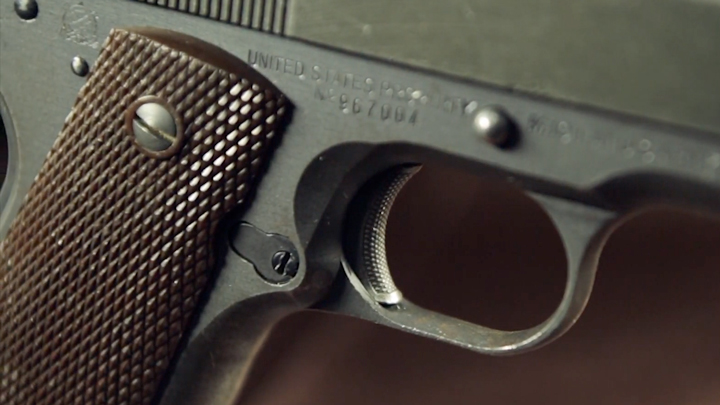

#VALUE OF REMINGTON RAND 1911A1 PISTOL SERIES#
The United States of America was adopting new firearms at a phenomenal rate several new handguns and two all-new service rifles (the M8 Krag and M1895 Navy Lee), as well as a series of revolvers by Colt and Smith & Wesson for the Army and Navy were adopted just in that decade. The M1911 pistol originated in the late 1890s, the result of a search for a suitable self-loading (or semi-automatic) handgun to replace the variety of revolvers then in service. Compact variants are popular civilian concealed carry weapons, because of the design's inherent slim width and the power of the. It is popular with civilian shooters in competitive events such as USPSA, IDPA, International Practical Shooting Confederation, and Bullseye shooting. Besides the pistol being widely copied itself, this operating system rose to become the preeminent type of the 20th century and of nearly all modern centerfire pistols. The M1911 is the best-known of John Browning's designs to use the short recoil principle in its basic design. The M1911 was replaced by the M9 pistol as the standard U.S. In total, the United States procured around 2.7 million M1911 and M1911A1 pistols in military contracts during its service life. 45, Automatic, M1911A1 in the Vietnam era. The designation changed to Pistol, Caliber.

45, M1911 for the original Model of 1911 or Automatic Pistol, Caliber. Its formal designation as of 1940 was Automatic Pistol, Caliber. It was widely used in World War I, World War II, the Korean War, and the Vietnam War. Browning designed the firearm which was the standard-issue side arm for the United States armed forces from 1911 to 1985. The M1911 is a single-action, semi-automatic, magazine-fed, and recoil-operated handgun chambered for the. In non-standard use: Gulf War, War in Afghanistan, and Iraq WarĢ.44 lb (1,105 g) empty, w/ magazine (FM 23–35, 1940) ħ-round standard detachable box magazine M1911A1 pistol manufactured by Remington RandĪs standard US Service pistol: World War I, World War II, Korean War, and Vietnam War


 0 kommentar(er)
0 kommentar(er)
